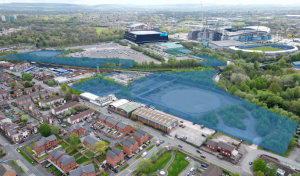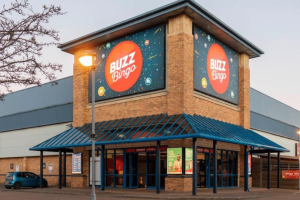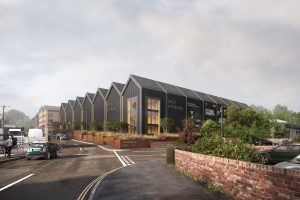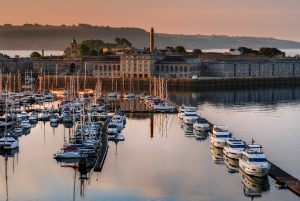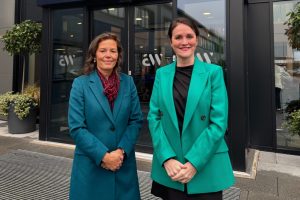In conversation with…Steve Normington

WIGAN Borough Council is in the midst of producing a flurry of new strategies, frameworks and other important-sounding documents set to shape policy-making in the area over the next 25 years.
A new economic framework document was approved by its cabinet last month, which forms an umbrella under which a series of local development framework and strategy documents mapping out the borough’s transport and housing needs will sit.
“One of the things we’re trying to do is to position ourselves more strategically than we have before by understanding why Wigan functions in the way it does – and the areas in which it doesn’t function as well,” said the council’s director of economy, Steve Normington.
He added that Wigan was the only one of the ten Greater Manchester boroughs to devise its own transport strategy as it faces a different set of circumstances.
It is the only Greater Manchester borough that sits outside the M60 motorway, for instance, and its sphere of economic influence not only features Greater Manchester but also Liverpool, Preston, Warrington, St Helens and other parts of Lancashire.
“A lot of our businesses tell us the problem with traffic is not our strategic connectivity, but local connectivity and local congestion.”
Indeed, he argues that strategic connectivity is one of Wigan’s two major selling points, even though they are under-utilised.
“It’s got the M6, the M62, M61 the A580, the A58 into the heart of the Liverpool Docks and the West Coast mainline,” he said. He added that it was also well-connected to the North West’s two biggest airports and enjoyed good waterway connections via the Bridgewater and Leeds-Liverpool canals.
The other major asset is the town’s environmental credentials. Its history as a seat of industry focussed on mining and textiles means that the popular image of the town remains one of industrial grime created in George Orwell’s Road to Wigan Pier.
Entrepreneur Martin Ainscough, who sold his family’s crane hire firm for £255m four years ago, now heads the Wigan Forward partnership featuring some of the town’s biggest employers which now provides a private sector input into council policy.
Although Orwell’s work remains popular, Ainscough said the images it portrays are now completely out of date and even damaging to the town.
“OK, it was true at the time but the reality is what was a blighted landscape has changed over the last 60-70 years. The mines have closed and the land has been remediated.
Now 70% of the borough is green land, which is more than any other in Greater Manchester,” he added.
“What we’ve got to do is to make people aware of that and to make sure the transport connections are in place so it can be enjoyed both by the people of Wigan and the North West region overall.”
Mr Normington said the new economic framework recognised the importance of its environment, while adding that the council recognised it has “got to work on an image shift” to change wider perceptions of Wigan.
“Wigan has image issues, it has perceived – and it is perceived in many cases – congestion issues and it has perceived low land values…therefore issues of return are sometimes problematic. In terms of Greater Manchester it is also not always seen as a location of choice.
“Those are issues we need to address. We need to do that by explaining and promoting its strategic connectivity, but also its environment and its attractiveness as a place to work and invest in because it’s been undersold and underplayed.”
In terms of physical sites, the council is working on bringing forward a number of key pieces of land both for employment and for housing.
A new planning application is also expected to be brought forward for the 93-acre North Leigh Business Park before the end of March. Developer North Leigh Park Group, which is owned by Black Country Properties, is proposing to convert landscaped former mining area into 800,000 sq ft of industrial property and 1,800 new homes. It also plans to create new lakes and parkland space.
Progress has also been made on the Bickershaw South site – another former colliery – whose extensive remediation was funded by the NWDA. It has since been inherited by the Homes & Communities Agency, which is currently assessing a shortlist of five bids from developers looking to bring forward housing-led, mixed use schemes.
The council is also working with DTZ to create new ideas for the 43.5-acre Westwood Park scheme, which had been earmarked for employment.
Indeed, he argues that the borough has “an abundance” of land which could be developed by expanding companies.
“Some of the land we have is not always of the right quality and needs remediation but in terms of our neighbours in Greater Manchester, Wigan has opportunity because we still have the capacity to deliver growth.
“What we need to do is match that capacity to accessibility.”
For instance, he said that a site close to Junction 25 of the M6 had been identified as a potential hub for food manufacturing and distribution companies.
“The importance of the food industry to Wigan’s economy is now vast,” he said. Green technology is another sector where firms are being courted.
The other major regeneration focus for the borough is its inner core – particularly Wigan, Ashton-In-Makerfield and Leigh town centres.
The latter has already seen development through new foodstores from Tesco and Morrisons, a new multiplex cinema and various new restaurants.
The council is also doing some work to car parks in the town, while Brookhouse Developments has planning in place for a scheme at Parsonage Way retail park for a new mixed-use development including business park units, 150 new houses, a medical centre and a Sainsbury’s foodstore.
In Wigan town centre, much of the focus has been on creating a rail “hub” by making Wigan’s Wallgate and North Western stations a joint terminus, or at least by improving physical and electronic communication between the pair.

“The whole idea is to improve the ambiance and give it a lift,” said Normington.
Heritage Lottery Fund provided money towards the project, and Normington said that the council is having to be proactive when it comes to finding cash for improvements.
For example, it has met with all four of the bidders for the West Coast mainline franchise with a view to discussing ways of jointly developing Wigan North Western to improve the station’s facilities and include more shops.
Within the Wigan Pier quarter, it has made improvements to roads around Saddle Junction and is also in talks with British Waterways about potential developments which would link the quarter to sites within its Greenheart Regional Park project.
“The incredible asset we have is the quality of our environment,” he said.




